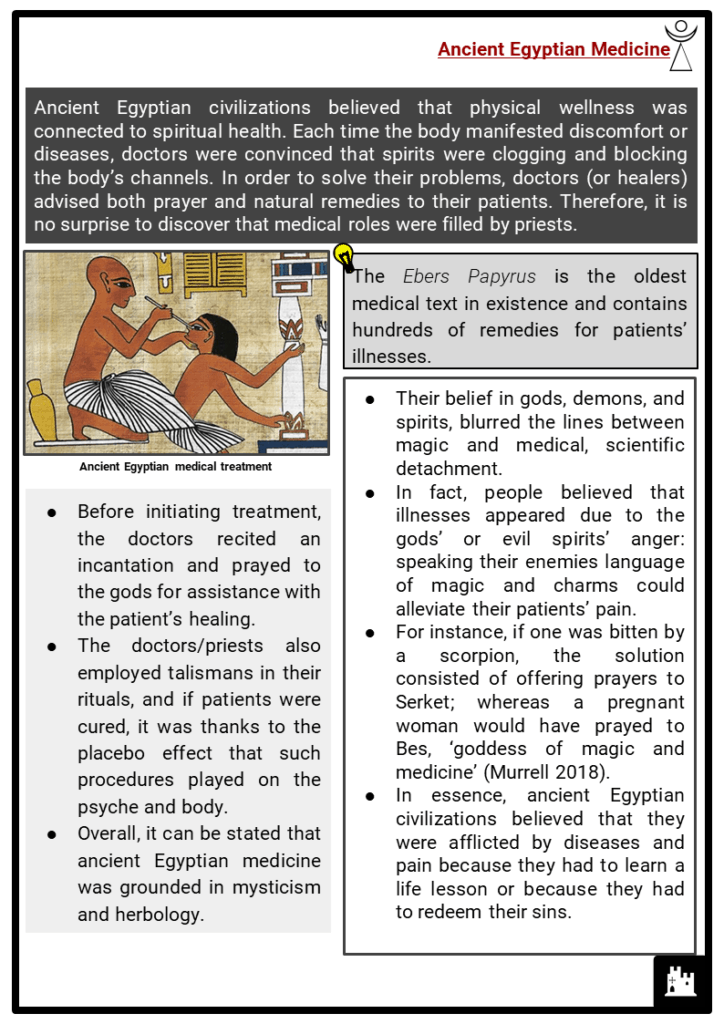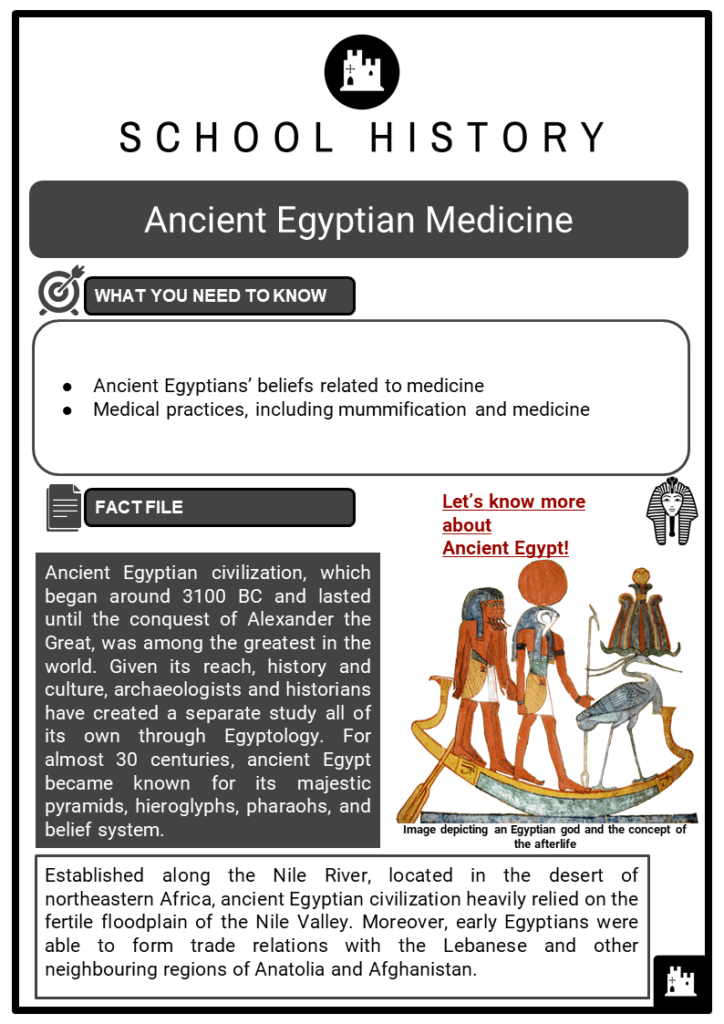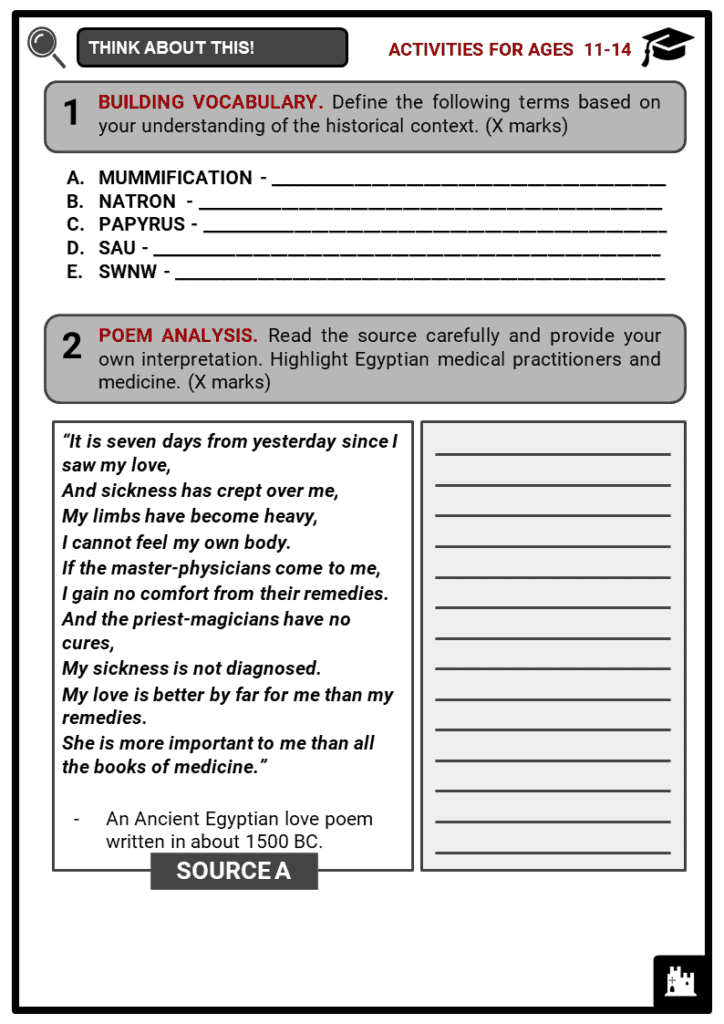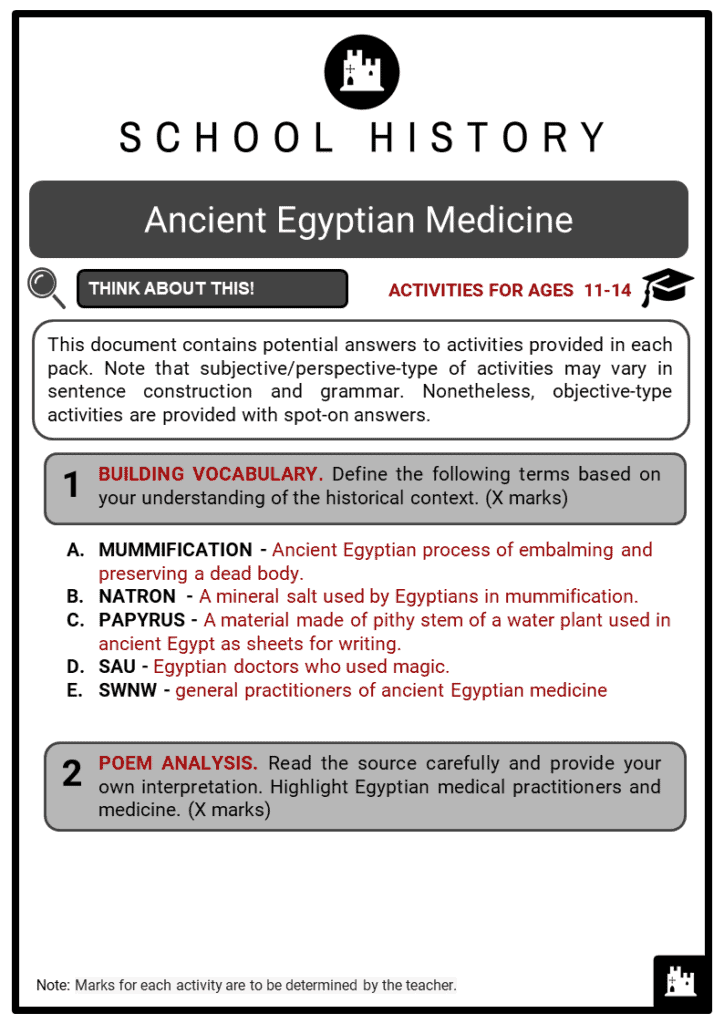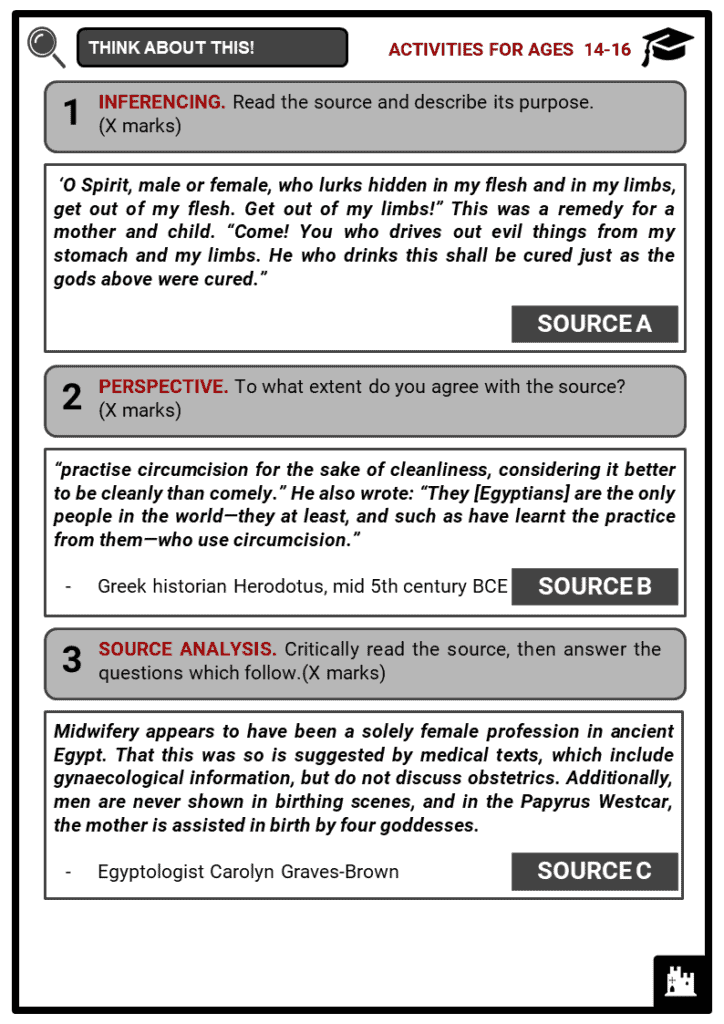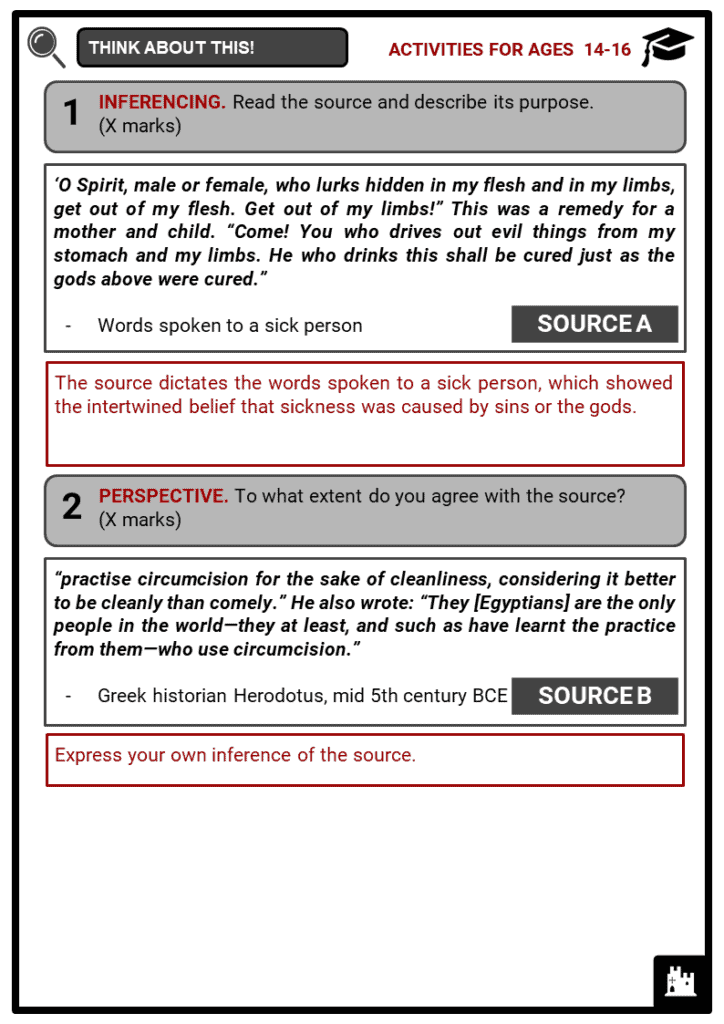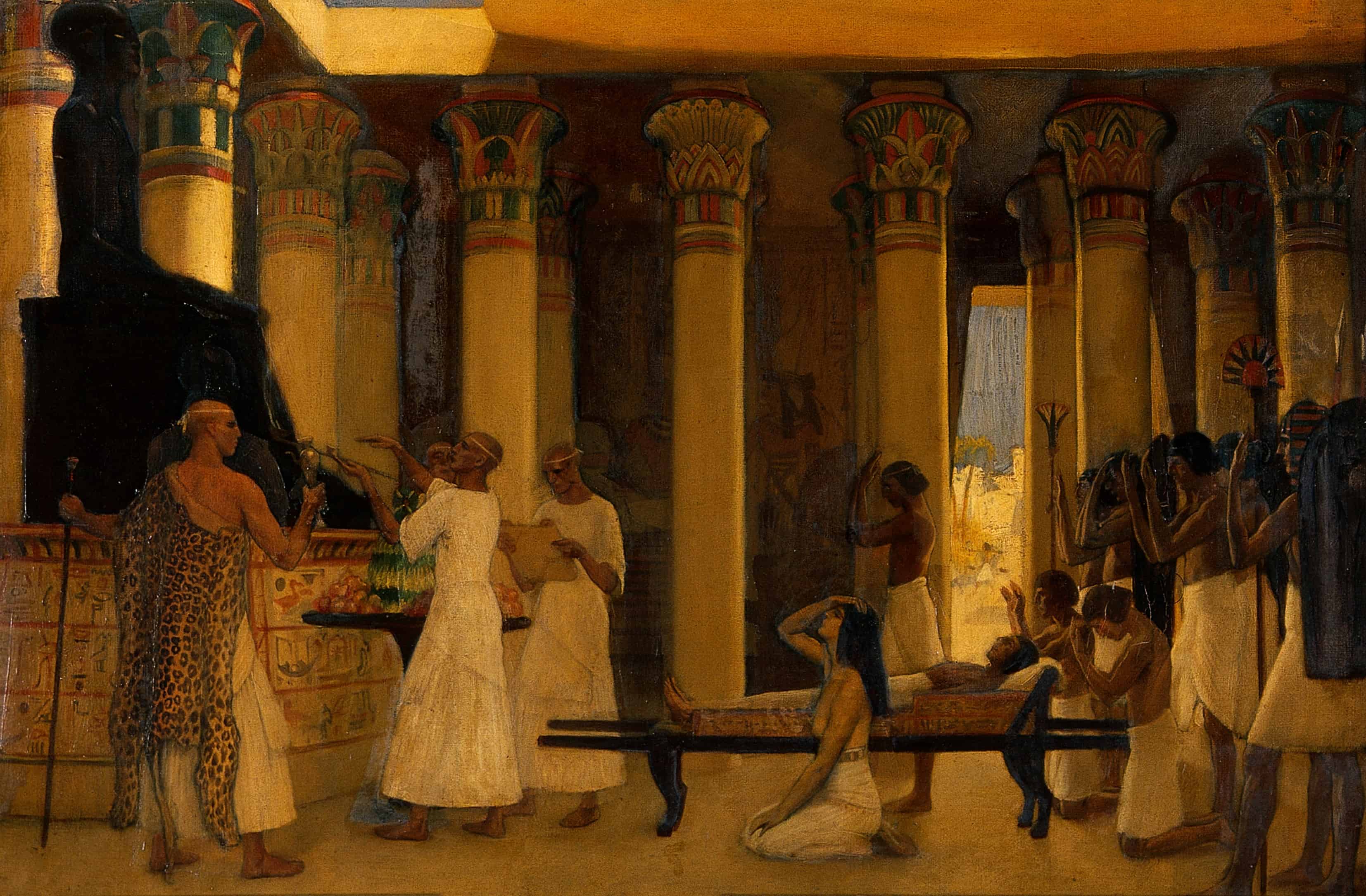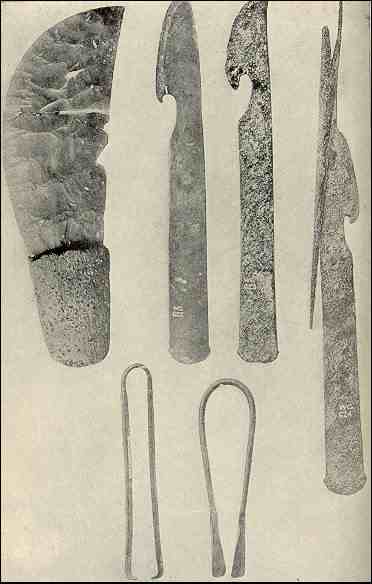Download Ancient Egyptian Medicine Worksheets
Do you want to save dozens of hours in time? Get your evenings and weekends back? Be able to teach Ancient Egyptian Medicine to your students?
Our worksheet bundle includes a fact file and printable worksheets and student activities. Perfect for both the classroom and homeschooling!
Table of Contents
Add a header to begin generating the table of contents
Summary
- Ancient Egyptians’ beliefs related to medicine
- Medical practices, including mummification and medicine
Key Facts And Information
Let’s know more about Ancient Egypt!
- Ancient Egyptian civilization, which began around 3100 BC and lasted until the conquest of Alexander the Great, was among the greatest in the world. Given its reach, history and culture, archaeologists and historians have created a separate study all of its own through Egyptology. For almost 30 centuries, ancient Egypt became known for its majestic pyramids, hieroglyphs, pharaohs, and belief system.
- Established along the Nile River, located in the desert of northeastern Africa, ancient Egyptian civilization heavily relied on the fertile floodplain of the Nile Valley. Moreover, early Egyptians were able to form trade relations with the Lebanese and other neighbouring regions of Anatolia and Afghanistan.
Ancient Egyptian Medicine
- Ancient Egyptian civilizations believed that physical wellness was connected to spiritual health. Each time the body manifested discomfort or diseases, doctors were convinced that spirits were clogging and blocking the body’s channels. In order to solve their problems, doctors (or healers) advised both prayer and natural remedies to their patients. Therefore, it is no surprise to discover that medical roles were filled by priests.
- The Ebers Papyrus is the oldest medical text in existence and contains hundreds of remedies for patients’ illnesses.
- Before initiating treatment, the doctors recited an incantation and prayed to the gods for assistance with the patient’s healing.
- The doctors/priests also employed talismans in their rituals, and if patients were cured, it was thanks to the placebo effect that such procedures played on the psyche and body.
- Overall, it can be stated that ancient Egyptian medicine was grounded in mysticism and herbology.
- Their belief in gods, demons, and spirits, blurred the lines between magic and medical, scientific detachment.
- In fact, people believed that illnesses appeared due to the gods’ or evil spirits’ anger: speaking their enemies language of magic and charms could alleviate their patients’ pain.
- For instance, if one was bitten by a scorpion, the solution consisted of offering prayers to Serket; whereas a pregnant woman would have prayed to Bes, ‘goddess of magic and medicine’ (Murrell 2018).
- In essence, ancient Egyptian civilizations believed that they were afflicted by diseases and pain because they had to learn a life lesson or because they had to redeem their sins.
- Since the ancient Egyptians had their own alphabetical and numerical system, they started recording their medical findings, and they compiled the Ebers Papyrus, which today is the most ancient text concerning medical practice. The book was written around 1500 BCE, and it contains over seven-hundred remedies, charms and incantations that date back to 3400 BCE.
- The work offers solutions to various conditions concerning dentistry, mental illnesses, the heart, gynaecological issues, pregnancy, dermatology, eyesight, and surgery.
- Medical texts were written on papyrus (the Ebers Papyrus is around twenty metres long) and were kept in the temple Per-Ankh (i.e. ‘House of Life’).
- Apart from the Ebers Papyrus, other important medical texts were The Kahun Gynaecological Papyrus (written in 1800 BCE), which encloses information on pregnancy and contraception methods;
- The London Medical Papyrus (written between 1782-1570 BCE), deals with issues regarding ‘eyes, skin, burns, and pregnancy’; The Edwin Smith Papyrus, written in the year 1600 BCE which was concerned with surgery; The Berlin Medical Papyrus, which covered topics concerning contraception, fertility, and methods of determining pregnancy; The Hearst Medical Papyrus offered information on urinary and digestive issues; The Chester Beatty Medical Papyrus (written around 1200 BCE) dealt with rectal issues and prescribed cannabis to patients suffering from cancer (Mark 2017).
- Based on the Ebers Papyrus, the Egyptian medical world was categorised into two: the ‘Rational method’, which relates to scientific principles, and the ‘Irrational method’, which used magico-religious beliefs.
Medical Practices
- In ancient Egypt, there existed three types of medical practitioners: priests, magicians or sau (who executed a number of spells and charms in order to get rid of evil spirits), and healers called swnw, who used medication to cure their patients.
- Although the ancient Egyptian civilization’s knowledge of anatomy was not highly developed, they had reached certain important understandings and discoveries: in fact, they knew that that the heart pumped blood through the veins and arteries, therefore providing blood to the body. They were also aware that the liver could be infected and could suffer diseases, however, they did not know what caused them.
- On the other hand, doctors believed that a women’s uterus floated within the body. Moreover, if a woman was experienced vaginal discharge, doctors prescribed the following: ‘You should treat it with a measure of carob fruit, a measure of pellets, 1 hin of cow milk. Boil, cool, mix together, drink on 4 mornings. Whereas if the pain was experienced in the lower abdomen, then ‘fumigation of the womb’ (i.e. purifying with incense or other fumes) was advised.
- Pregnancy was predicted through a method that seems quite absurd today: an onion was placed the vaginal canal, and if the next morning the woman’s breath presented an onion smell, then it meant she was expecting a child. This was not the only method: in fact, in some instances, emmer and barley were ‘doused with a woman’s urine; and if the plants flourished’ it signified pregnancy: if emmer was the first of the two plants to sprout, then the child would be female; if barely sprouted first, the child would be male.
- In order to cure simple headaches, or more complicated issues such as epilepsy, abscesses and blood clots, ancient Egyptian civilizations employed harsh measures such as trepanation, which consists of drilling a hole in the skull in order to relieve pressure, and when performing simple operations. Such a technique was also used to exorcise patients of evil spirits and in an attempt to relieve mental illnesses.
- In other instances, if patients were suffering from headaches, medical practitioners would prescribe ‘an elixir containing human flesh, blood or bone’, or ‘mummy powder’, which supposedly had ‘magical properties’.
- By ingesting the remains of a corpse, the patient believed they were also ingesting part of its spirit and its qualities, thus obtaining a higher rate of ‘vitality and wellbeing’.
- Such macabre practices belong to a branch of medicine called ‘corpse medicine’, which was used for hundreds of years, up to the 17th century (in fact, the king of England Charles II, drank ‘a restorative brew made from crumbled human skull and alcohol’.
- With this view, eating human fat would relieve a patient’s muscle aches, and ingesting skull would relieve migraines and headaches.
- For the ancient Egyptians, the heart was the ‘centre of the body, spirit, and soul’, not the brain.
- During ancient Egyptian times, wounds were taken care of by applying a concoction of ‘honey, willow leaves, acacia seeds, and other herbs’, whereas bleeding was stopped with ‘raw meat, sawdust, animal fat, or dung’. Surgical procedures were carried out with ‘forceps, bone saws, [and] scalpels’.
- In ancient Egypt, circumcision was usually performed on adolescent males as a ritual or initiation into priesthood, or as adult males from the noble class. Some historical accounts argued that circumcision among Egyptian boys had no evidence of social class demarcation, as some kings’ mummies showed no circumcision. For example, Ahmose I, founder of Dynasty 18 and the New Kingdom, was not circumcised.
- Ancient Egyptians were known for their method of embalming the dead through the process of mummification. It is believed that the intentional process of mummification began in 2600 BCE, during the 4th and 5th dynasties.
- The entire mummification process took 70 days. The chief embalmer was known as the hery sheshta, who wore a jackal mask, representing Anubis, god of mummification.
- Shaving and washing of the body with wine and spices.
- Internal organs, including the stomach, liver, lungs and intestines were placed in canopic jars, which were buried with the mummy.
- Removal of decaying internal body parts. The brain was first removed using a long hook.
- Afterwards, the left side of the abdomen was cut to remove the organs of the abdomen and chest. The heart was the only one left in place.
- To remove the moisture of the body, a strong drying salt named natron was used.
- Stoppers of canopic jars were usually shaped like the heads of Horus’ sons, Duamutef with a jackal head, Qebehsenuef with a falcon head, and Hapi with a baboon head.
- After 40 days of completely drying the body, natron was removed, and the mummy was cleaned again with oil. Linen was used to wrap each mummy.
- Inside the tomb, necklaces, rings, bracelets, and other items the dead needed in the afterlife were placed.
- A portrait mask covered the head of a mummy. After the whole process, the masked mummy was then put into a wooden coffin and placed in a sarcophagus.
Ingredients in Egyptian Medicine
- Doctors prescribed specific foods that exhibited curative properties for certain diseases. For instance, some of the most popular ingredients used by healers were aloe, acacia seeds and leaves, cannabis, castor oil, cedar oil, cilantro, dates, fish, frankincense, garlic, goose fat, honey, juniper, Mandrake, pomegranate juice and root, thyme, and willow leaves.
- However, more macabre ingredients were also often prescribed: for instance ‘lizard blood, dead mice, mud and mouldy bread were all used as topical ointments and dressings, and women were sometimes dosed with horse saliva as a cure for an impaired libido’.
- Medicines were often ‘mixed with beer, wine, or honey’, which were thought to provide patients with medical benefits. In fact, beer was considered as the gods’ gift to humanity since it contributed to one’s ‘health and enjoyment’.
- The protectors of beer were the female deities Tenenet and Hathor, and the male god Set. Set was also considered the god of chaos, violence, upheavals, storms, and had murdered his own brother Osiris, and was a powerful god.
- The spell is recited in the following way: ‘There is no restraining Set. Let him carry out his desire to capture a heart in that name ‘beer’ of his – To confuse a heart, and to capture the heart of an enemy’.
- In fact, the pharaoh of Egypt Seti I, had particularly honoured the god, and an incantation was created in order to cure unknown illnesses through the use of beer.
- Although today it is well known that Mercury is a poisonous substance, during the ancient Egyptian period, it was considered a potent liquid that could increase one’s lifespan.
- The Demotic Magical Papyrus is entirely dedicated to spells, charms, and rituals: all the material contained in the book borders on the mystical and the occult. Some of the papyrus’ incantations attempted to bring the dead back to life.
Image sources:
[2.] https://upload.wikimedia.org/wikipedia/commons/9/9d/Ancient_Egypt_Medical_tools2.jpg

